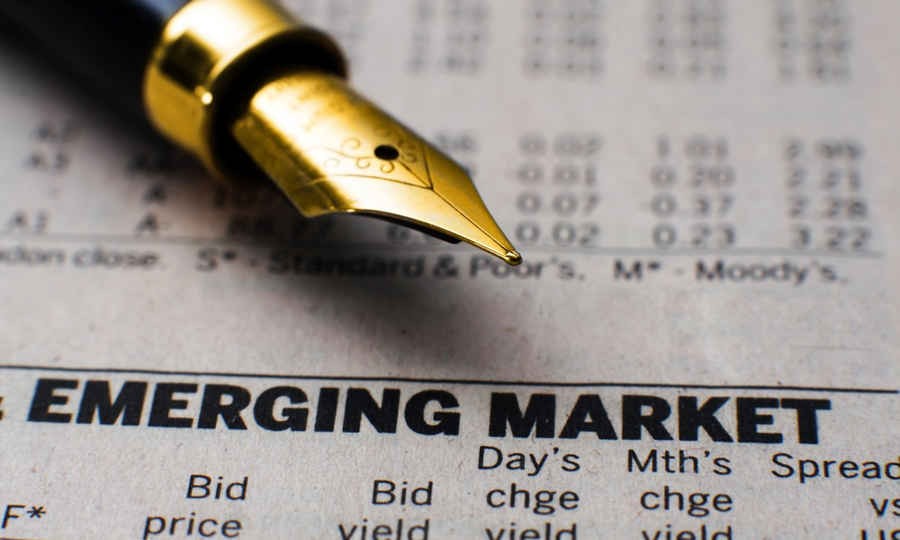I WANT
RELATED LINKS
I WANT
RELATED LINKS
RELATES LINKS
I WANT
RELATES LINKS
Services
Related Links
Use and Management of Cookies
We use cookies and other similar technologies on our website to enhance your browsing experience. For more information, please visit our Cookies Notice.
- Personal Banking
- Stories & Tips
- Grow Your Wealth
- Emerging markets – Risks versus Rewards
- Personal Banking
- ...
- Emerging markets – Risks versus Rewards
Emerging markets – Risks versus Rewards
06-09-2021
The economies of developing nations are known as emerging market economies, previously referred to as developing countries, the opposite of developed markets or economies.
Analysts and investors have divided emerging markets into three regions:
- Asian nations comprising Thailand, South Korea, China, India, Malaysia, the Philippines, Taiwan, Indonesia, and Pakistan.
- Latin American nations comprising Argentina, Brazil, Chile, Colombia, Mexico, Peru, and Venezuela.
- Eastern European and the Middle East nations: Czech Republic, Hungary, Poland, Russia, Israel, Jordan, Morocco, Egypt, South Africa, and Turkey.
Among the aforementioned emerging countries, Brazil, Russia, India, and China are recognized as major players influencing the world economy and collectively referred to as the BRIC economies.
One of the major factors distinguishing emerging markets from developed markets is per capita Gross National Income (GNI). In developed economies average GNI stands at USD 10,066 per year (312,000 baht per year or approximately 26,000 baht per month). Economies falling below that benchmark are considered emerging economies. Thailand’s GNI currently stands at USD 5,400 per year (167,400 baht per year or approximately 13,950 baht per month).
The benefit of investing in emerging markets is that these countries generally can achieve a higher rate of economic growth or GDP than developed markets. For example, US GDP was around 2% - 3% per year before the COVID-19 crisis, while rates recorded in the EU countries have been as low or lower for many years. However, the GDP of emerging countries is usually higher than 3% on average, mainly because emerging countries have larger populations, especially working-age populations. With more purchasing power and driven to raise their status, these people have played a major role in accelerating economic growth.
shown by low public debt and high international reserves. These characteristics are different from those of developed countries, where public debt to GDP ratios are much higher.

In the past, emerging countries relied mostly on income from the manufacturing and agricultural sectors. Now they are home to the innovative startups driving the global economy, and investors from all over the world prefer to invest and grow with these markets.
It is widely understood that once the world begins to recover from the current economic crisis emerging markets will greatly benefit from the rebound. Recovery will normally bring back global supply chains, driving greater demand for raw materials. Emerging economies will benefit from this demand, as manufacturers and exporters of raw materials such as agricultural products, ores, processed metals, electronic components, and much more. Recently, emerging markets in Asia such as South Korea and Taiwan have shifted more and more to advanced tech industries and have become global players.
Risks of investment in emerging markets
The US-China trade war: Despite US President Joe Biden showing a more compromising stance against China compared to the former president who was fond of raising tariffs, we may see new trade rifts. Biden has strongly commented on China's abusive trade practices and taking advantage of other nations. This may imply that the US under his leadership will target China on many issues, whether it is for violation of intellectual property rights, anti-dumping, state subsidies for entrepreneurs, lax environmental standards, or human rights violations.
In addition, an ongoing tech war remains a hot battlefield between the US and China. Despite the different policies between Biden and Trump, their stance on tech war issues remains similar. Biden has also banned Chinese software, applications, and 5G technology, just like the previous administration. If the situation gets worse, it could slow down the economic growth of emerging markets because both China and the US are their important trading partners.
Appreciation of the US dollar and rising interest rates: During economic crises, central banks of developed countries have implemented quantitative easing measures (QE) as special monetary tools to stabilize the overall economy, both for financial stability and stimulating demand to create more employment and economic expansion.
QE is an unconventional monetary policy. Usually adopted during times of economic crisis, it is used by central banks aiming to boost their economies. The most popular financial measure is policy rate cuts in an attempt to lower funding costs borne by the business sector. QE measures help inject liquidity into the economic system, driving private spending. It is also used to lower bond yields, allowing central banks to purchase securities on the open market to help bring down borrowing costs for the business sector. This enables the manufacturing sector and employment to continue. However, this type of measure also has adverse impacts, such as causing inflationary pressures due to the amount of money being injected into the system. It also can cause currency depreciation as well.
When the economy starts to recover, central banks will exercise QE tapering. This will cause the US dollar to appreciate and US treasury yields to rise, resulting in funds flowing out of emerging markets and back to developed countries. Historically, US dollar appreciation has always caused financial crises in emerging countries, mainly from too much offshore borrowing (similar to what happened in Thailand in 1997). The most common indicators signaling a crisis in emerging countries are current account deficit levels and budget deficits. These two factors indicate demand for offshore borrowing.
To sum up, although investing in emerging market countries is attractive, there are risks involved that investors should not overlook, including exchange rate fluctuations, changes in government policies that may affect economic growth, and market liquidity risk.
By Nipapun Poonsateansup, CFP®, ACC
Independent Financial Advisor, Author, and Speaker
